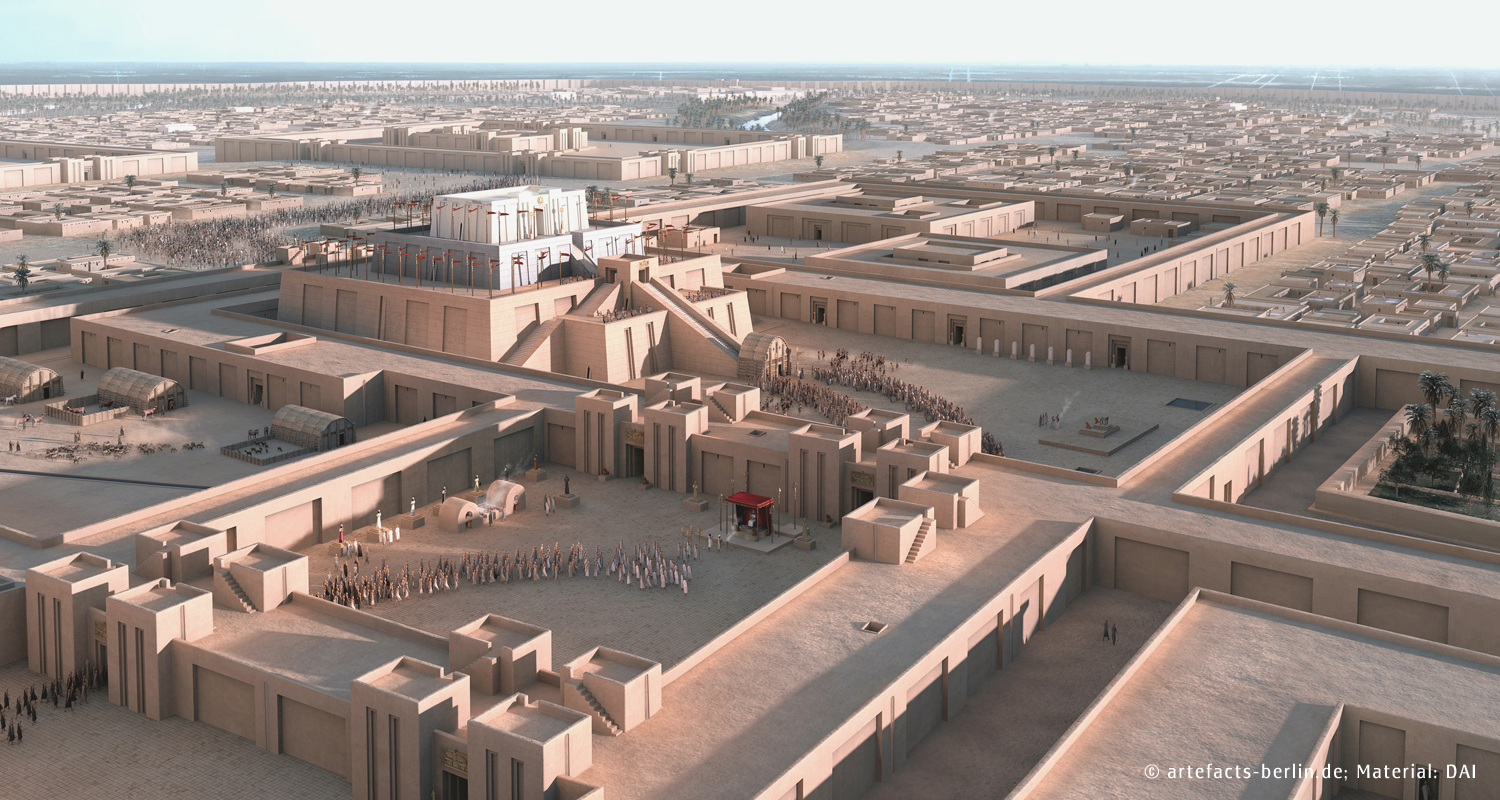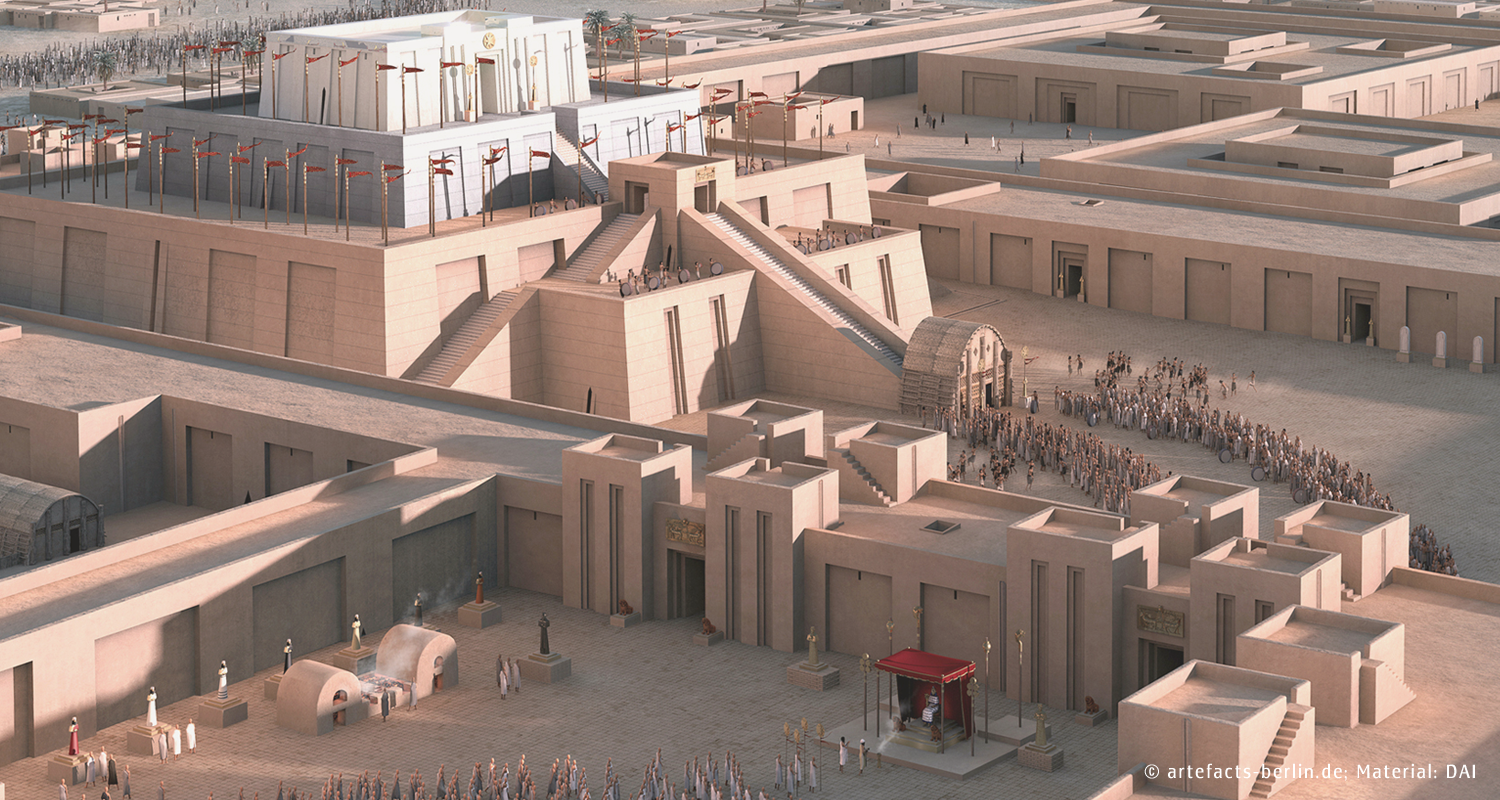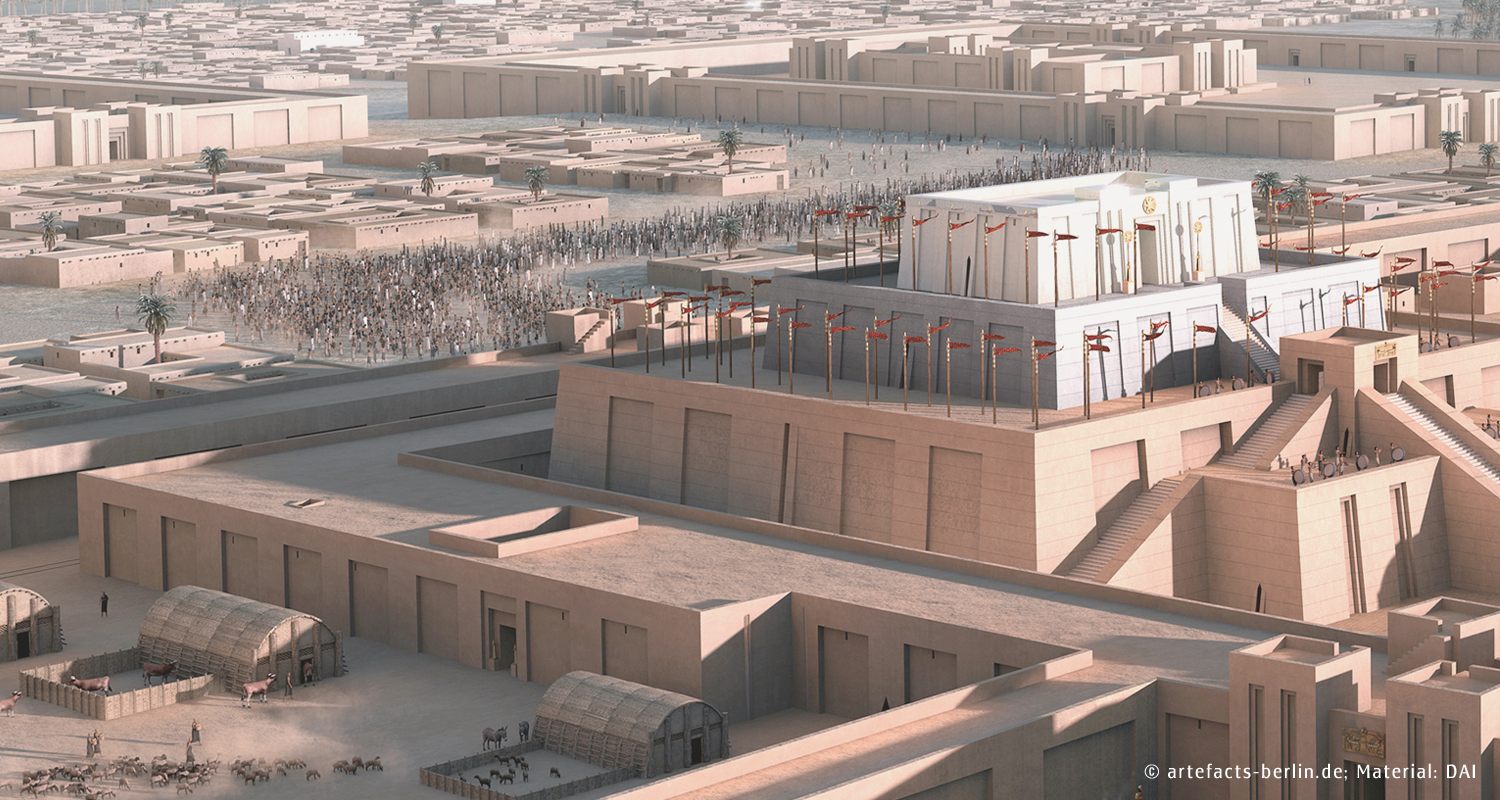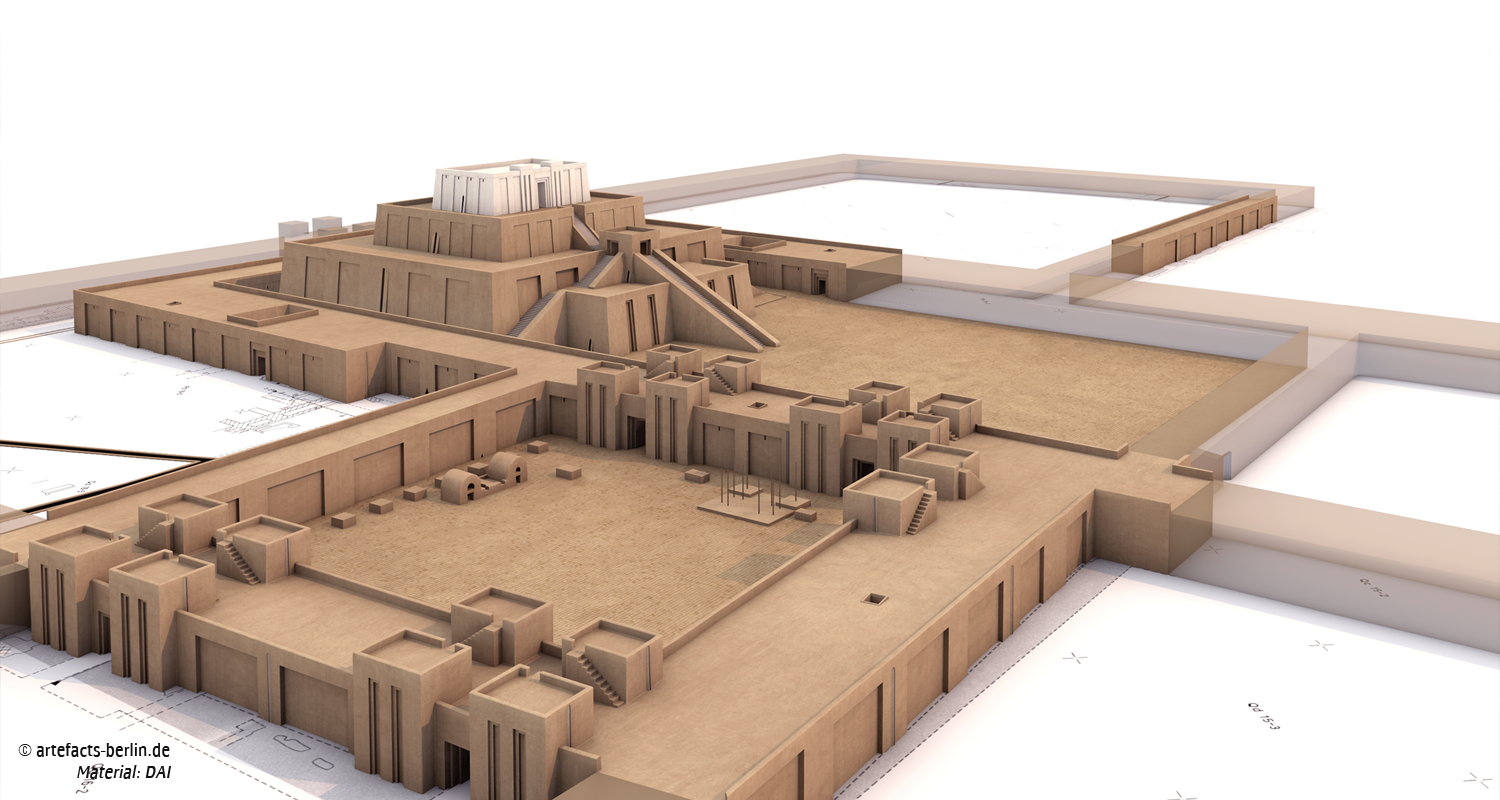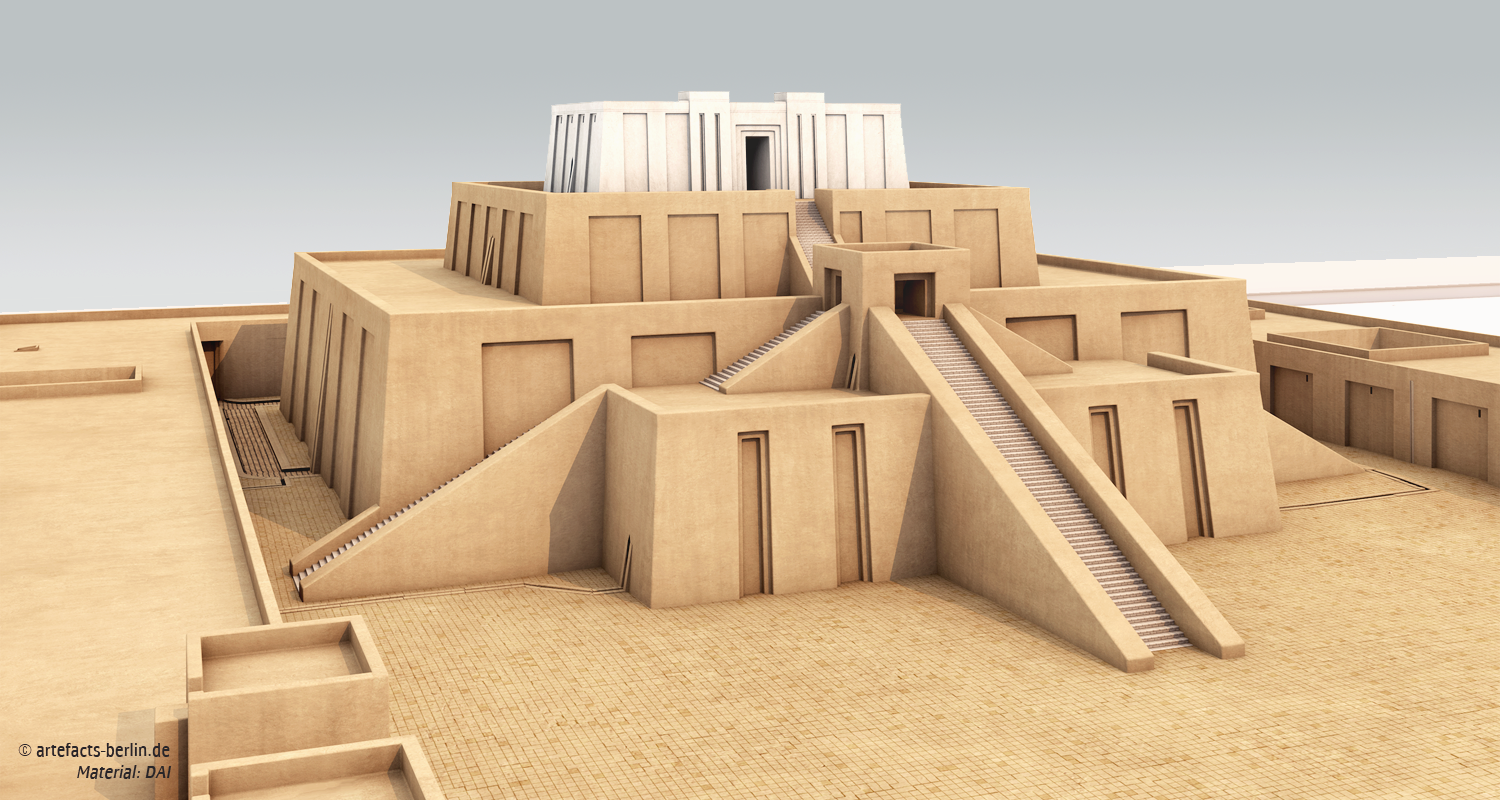About the project
Uruk/Warka, situated in modern-day Iraq, is one of the first cities in the world and was populated almost without interruption for over 5,000 years – from the 4th millennium BCE to the 1st millennium CE. In the so called 3rd dynasty of Ur (21st century BCE), the centre of Uruk was dominated by a ziggurat, that was dedicated to the goddess Inanna.
The probably three-storey ziggurat was surrounded by a complex system of walls and courts, which separated the holy district from the rest of the city. Archaeological records document various installations like a big oven, pedestals or canals. Texts inform us that various activities were conducted in different courtyards.
In an extensive process, a range of secondary sources were consulted to create an image of Uruk of over 4000 years ago. In this loose reconstruction you can see the early morning of an akitu festival. Over 4000 human models and 300 buildings were used in this view. The geography is a result of the latest topographical data.
The results of our work were presented within a large exhibition about Uruk, called ‘Uruk – 5000 years of the megacity’, in the Pergamon Museum in Berlin, and subsequently at the LWL-Museum für Archäologie, Herne, in 2013/14.
Literature
- van Ess, M. 2001: Uruk. Architektur II. Von der Akkad- bis zur mittelbabylonischen Zeit. AUWE 15, Mainz.
- Hageneuer, S. 2014: The visualisation of Uruk – First impressions of the first metropolis in the world, in: Börner, W./Uhlirtz, S., Proceedings of the 18th International Conference on Cultural Heritage and New Technologies 2013 (CHNT 18, 2013), Vienna.
- Hageneuer, S. 2019: “Uruk”, in: ANTIKE WELT Jubiläumsheft “Auferstehung der Antike. Archäologische Stätten digital rekonstruiert”, Wissenschaftliche Buchgesellschaft: Darmstadt, 10-11.
- Sallaberger, W. 1993: Der kultische Kalender der Ur III-Zeit, Untersuchungen zur Assyriologie und Vorderasiatischen Archäologie 7/1, Berlin/New York.

